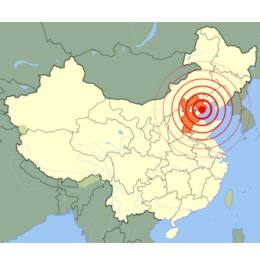| Gordon Bell Prize For Earth Shattering Research |
| Written by Sue Gee |
| Wednesday, 22 November 2017 |
|
For the second year in a row a Chinese team has been awarded the ACM Gordon Bell Prize, presented annually to recognize outstanding achievement in high-performance computing. This year the focus of the research was earthquake simulation. The purpose of the $10,000 award is: to track the progress over time of parallel computing, with particular emphasis on rewarding innovation in applying high-performance computing to applications in science, engineering, and large-scale data analytics. As in previous years, the award was presented at the International Conference for High Performance Computing, Networking, Storage and Analysis, which this year was SC17 held in Denver, Colorado last week. The 2017 award has been made for the research project: 18.9-Pflops Nonlinear Earthquake Simulation on Sunway TaihuLight: Enabling Depiction of 18-Hz and 8-Meter Scenarios which developed software that was able to efficiently process 18.9 Pflops (or 18.9 quadrillion calculations per second) of data and create 3D visualizations relating to the most devastating earthquake of the 20th century. The Tangshan earthquake occurred on July 28, 1976 in Tangshan, Hebei, China and resulted in approximately 242,000-700,000 deaths. In developing their simulations for the Tangshan earthquake, the winning team included input data from the entire spatial area of the quake, a surface diameter of 320 km by 312 km, as well as 40 km deep below the earth’s surface. The input data also included a frequency range of the earthquake of up to 18 Hz (Hertz) whereas previous simulations of violent earthquakes have employed a lower frequency, since enormous memory and time consumption are needed for high frequency simulations. The project used the Sunway TaihuLight, a Chinese supercomputer located at the National Supercomputer Center (NSC) in Wuxi, Jingsu, China. With over 10.5 M heterogeneous cores and is ranked as the fastest supercomputer in the world. It was the computer used by last year winners of the Gordon Bell Prize. Some members of that 12-man team, whose project was concerned with understanding weather patterns 2016, were also in this years which consisted of Guangwen Yang, Haohuan Fu, Wei Xue, Conghui He and Bingwei Chen of Tsinghua University and National Supercomputing Center; Zekun Yin, Weiguo Liu and Tingjian Zhang of Shandong University; Zhenguo Zhang and Xioafei Chen of Southern University of Science and Technology; Wenqiang Zhang of University of Science and Technology of China; Wanwang Yin, National Research Center of Parallel Computer Engineering and Technology, China. The Chinese team wasn't the first to develop algorithms for supercomputers in an effort to simulate earthquake activity and in 2015 a team of US researchers was awarded the Gordon Bell prize for simulating the Earth's interior in research that could herald a major step toward more accurately predicting earthquakes and volcanic eruptions, see Gordon Bell Prize For Simulating The Earth's Interior. Recognizing that they were building on previous research the abstract prepared by the 2017 Chinese team explains: Our innovations include: (1) a customized parallelization scheme that employs the 10 million cores efficiently at both the process and thread levels; (2) an elaborate memory scheme that integrates on-chip halo exchange through register communication, optimized blocking configuration guided by an analytic model, and coalesced DMA access with array fusion; (3) on-the-fly compression that doubles the maximum problem size and further improves the performance by 24%. The even more exciting innovation is the on-the-fly compression scheme, which, at the cost of an acceptable level of accuracy lost, scales our simulation performance and capabilities even beyond the machine’s physical constraints. While the current compression scheme is largely customized for our specific application and the Sunway architecture, we believe the idea has great potential to be applied to other applications and other architectures. Referring to the ramifications of the research, the ACM press release states: Although earthquake prediction and simulation is an inexact and emerging area of research, scientists hope that the use of supercomputers, which can process vast sets of data to address the myriad of variables at play in geologic events, may lead to better prediction and preparedness. For example, the Chinese team’s 3D simulations may inform engineering standards for buildings being developed in zones known to have seismic activity. In this vein, many have advocated for a significant increase in the amount of sensors to regularly monitor seismic activity. More InformationRelated ArticlesGordon Bell Prize For Simulating The Earth's Interior Google's Post-Earthquake Mapping and Imagery Earthquake Prediction Using Machine Learning
To be informed about new articles on I Programmer, sign up for our weekly newsletter, subscribe to the RSS feed and follow us on, Twitter, Facebook, Google+ or Linkedin. {loadposition moreNEWS} {loadposition moreNEWSlist} {loadposition comment} |
| Last Updated ( Wednesday, 22 November 2017 ) |

